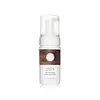What's inside
What's inside
 Benefits
Benefits

 Concerns
Concerns

 Ingredients Side-by-side
Ingredients Side-by-side

Water
Skin ConditioningSodium Lauroyl Sarcosinate
CleansingDecyl Glucoside
CleansingCocamidopropyl Betaine
CleansingPropylene Glycol
HumectantHydroxyethyl Urea
HumectantGlycereth-25 PCA Isostearate
EmulsifyingLaureth-2
CleansingSorbitol
HumectantSodium Lactate
BufferingFructose
HumectantDisodium Cocoamphodiacetate
CleansingPunica Granatum Extract
AstringentBisabolol
MaskingBetaine
HumectantSodium PCA
HumectantPCA
HumectantSerine
MaskingAlanine
MaskingGlycine
BufferingGlutamic Acid
HumectantLysine Hcl
Skin ConditioningThreonine
Arginine
MaskingProline
Skin ConditioningAllantoin
Skin ConditioningPolysorbate 80
EmulsifyingParfum
MaskingPhenoxyethanol
PreservativeEthylhexylglycerin
Skin ConditioningWater, Sodium Lauroyl Sarcosinate, Decyl Glucoside, Cocamidopropyl Betaine, Propylene Glycol, Hydroxyethyl Urea, Glycereth-25 PCA Isostearate, Laureth-2, Sorbitol, Sodium Lactate, Fructose, Disodium Cocoamphodiacetate, Punica Granatum Extract, Bisabolol, Betaine, Sodium PCA, PCA, Serine, Alanine, Glycine, Glutamic Acid, Lysine Hcl, Threonine, Arginine, Proline, Allantoin, Polysorbate 80, Parfum, Phenoxyethanol, Ethylhexylglycerin
Water
Skin ConditioningGlycerin
HumectantPropylene Glycol
HumectantTea-Cocoyl Alaninate
CleansingTrehalose
HumectantCocamidopropyl Betaine
CleansingSodium Lauroyl Sarcosinate
CleansingButylene Glycol
HumectantDisodium Cocoyl Glutamate
CleansingPanthenol
Skin ConditioningSodium Cocoyl Glutamate
CleansingChlorphenesin
AntimicrobialOryza Sativa Extract
AbsorbentPhenoxyethanol
PreservativeOryza Sativa Bran Extract
Skin ConditioningO-Cymen-5-Ol
AntimicrobialIngredients Explained
These ingredients are found in both products.
Ingredients higher up in an ingredient list are typically present in a larger amount.
Cocamidopropyl Betaine is a fatty acid created by mixing similar compounds in coconut oil and dimethylaminopropylamine, a compound with two amino groups.
This ingredient is a surfactant and cleanser. It helps gather the dirt, pollutants, and other impurities in your skin to be washed away. It also helps thicken a product and make the texture more creamy.
Being created from coconut oil means Cocamidopropyl Betaine is hydrating for the skin.
While Cocamidopropyl Betaine was believed to be an allergen, a study from 2012 disproved this. It found two compounds in unpure Cocamidopropyl Betaine to be the irritants: aminoamide and 3-dimethylaminopropylamine. High-grade and pure Cocamidopropyl Betaine did not induce allergic reactions during this study.
Learn more about Cocamidopropyl BetainePhenoxyethanol is a preservative that has germicide, antimicrobial, and aromatic properties. Studies show that phenoxyethanol can prevent microbial growth. By itself, it has a scent that is similar to that of a rose.
It's often used in formulations along with Caprylyl Glycol to preserve the shelf life of products.
Propylene Glycol is an odorless, colorless liquid. As a humectant, it helps skin retain moisture. It also aids in delivering active ingredients.
Another role of this ingredient is preventing a product from melting or freezing. Propylene glycol also adds antimicrobrial properties to a product, elongating product lifespan.
This ingredient is considered an organic alcohol and commonly added into both cosmetics and foods.
Those with sensitive skin or conditions may develop a rash when using this ingredient.
Learn more about Propylene GlycolSodium Lauroyl Sarcosinate is a cleansing agent and emulsifier. It is a surfactant derived from sarcosine, and a common source is coconut oil.
As a surfactant, Sodium Lauroyl Sarcosinate helps lift dirts, oil, and other molecules to be washed away. In leave-on products, this ingredient is used as an emulsifier. Emulsifier help prevent ingredients such as oils and waters from separating.
Sodium Lauroyl Sarcosinate is also commonly found as a foaming agent in shampoo, toothpaste, and shaving foam. It is amphiphilic, meaning it loves both water and fats.
Learn more about Sodium Lauroyl SarcosinateWater. It's the most common cosmetic ingredient of all. You'll usually see it at the top of ingredient lists, meaning that it makes up the largest part of the product.
So why is it so popular? Water most often acts as a solvent - this means that it helps dissolve other ingredients into the formulation.
You'll also recognize water as that liquid we all need to stay alive. If you see this, drink a glass of water. Stay hydrated!
Learn more about Water